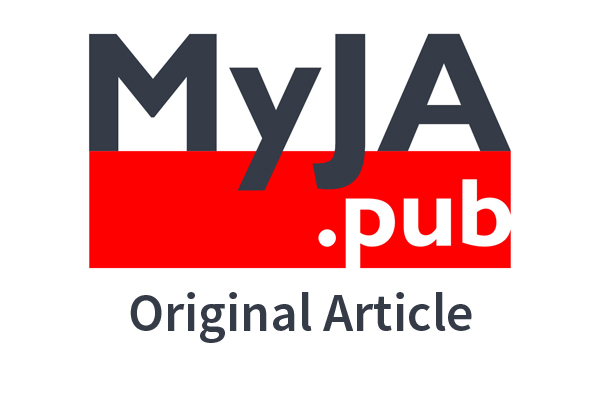Keywords
Abstract
Background: The depth of neuromuscular blockade (NMB) is important to provide optimal space during laparoscopic surgery, especially in the obese population. This study compared the effects of moderate versus deep neuromuscular blockade on the surgical rating scale in laparoscopic sleeve gastrectomy.
Methods: This single-blind, randomised controlled trial involved 24 patients with a body mass index > 30 kg/m2 who underwent laparoscopic sleeve gastrectomy. They were randomised into two groups: moderate NMB with a target train-of four (TOF) of 1-2 (Group M) and deep NMB with a post-tetanic count (PTC) of 1-2 (Group D). The quality of the surgical field was scored by a surgeon using the 5-point Surgical Rating Scale (SRS) from 1 (extremely poor condition) to 5 (optimal condition). The haemodynamic changes, end-tidal CO2, duration of surgery, and intra-abdominal pressure were also recorded. At the end of surgery, patients were given intravenous sugammadex at 2 mg/kg if the TOF count was 12, or 4 mg/kg if the PTC was 1-2. Patients were extubated when the TOF ratio (T4/T1) was greater than 0.9.
Results: The mean SRS was significantly higher in Group D (4.83 ± 0.39) compared with Group M (4.08 ± 0.79), p = 0.004. All patients in Group D had favourable surgical conditions, in which 16.7% of patients achieved SRS of 4 and 83.3% had SRS of 5. In Group M, 8.3% of patients had an unfavourable surgical field.
Conclusion: Deep NMB provided a favourable surgical condition compared with a moderate NMB in the laparoscopic sleeve gastrectomy.
References
Gregg EW. Secular Trends in Cardiovascular Disease Risk Factors According to Body Mass Index in US Adults. JAMA. 2005;293:1868. https://doi.org/10.1001/jama.293.15.1868.
Institute for Public Health, National Health and Morbidity Survey 2015 (NHMS 2015). Vol. II: Non-Communicable Diseases, Risk Factors, and Other Health Problems Ministry of Health Malaysia. 2015;2:185–186.
Institute for Public Health, National Health and Morbidity Survey (NHMS) 2019: Vol. I: NCDs-Non-Communicable Diseases: Risk Factors and Other Health Problems. 2020, Ministry of Health Malaysia, Putrajaya, Malaysia.
Wyatt HR. Update on Treatment Strategies for Obesity. J Clin Endocrinol Metab. 2013;98:1299–306. https://doi.org/10.1210/jc.2012-3115.
Luján JA, Frutos MD, Hernández Q, et al. Laparoscopic Versus Open Gastric Bypass in the Treatment of Morbid Obesity. Ann Surg. 2004;239:433–7. https://doi.org/10.1097/01.sla.0000120071.75691.1f.
Banka G, Woodard G, Hernandez-Boussard T, Morton JM. Laparoscopic vs Open Gastric Bypass Surgery. Arch Surg. 2012;147. https://doi.org/10.1001/archsurg.2012.195.
Staehr-Rye AK, Rasmussen LS, Rosenberg J, Juul P, Riber C, Gätke MR. Surgical space conditions during low pressure laparoscopic cholecystectomy with deep versus moderate neuromuscular blockade. European Journal of Anaesthesiology. 2013;30:233–233. https://doi.org/10.1097/00003643-201306001-00731
Torensma B, Martini CH, Boon M, et al. Deep Neuromuscular Block Improves Surgical Conditions during Bariatric Surgery and Reduces Postoperative Pain: A Randomized Double Blind Controlled Trial. PLoS One. 2016;11:e0167907. https://doi.org/10.1371/journal.pone.0167907.
Kopman AF, Naguib M. Laparoscopic Surgery and Muscle Relaxants. Anesth Analg. 2015;120:51–8. https://doi.org/10.1213/ane.0000000000000471.
Bruintjes MH, van Helden EV, Braat AE, et al. Deep neuromuscular block to optimize surgical space conditions during laparoscopic surgery: a systematic review and meta-analysis. Br J Anaesth. 2017;118:834–42. https://doi.org/10.1093/bja/aex116.
Fuchs-Buder T, Meistelman C, Raft J. Sugammadex: clinical development and practical use. Korean J Anesthesiol. 2013;65:495. https://doi.org/10.4097/kjae.2013.65.6.495.
Saber AA, Elgamal MH, McLeod MK. Bariatric Surgery: The Past, Present, and Future. Obes Surg. 2007;18:121–8. https://doi.org/10.1007/s11695-007-9308-7.
Martini CH, Boon M, Bevers RF, Aarts LP, Dahan A. Evaluation of surgical conditions during laparoscopic surgery in patients with moderate vs deep neuromuscular block. Br J Anaesth. 2014;112:498–505. https://doi.org/10.1093/bja/aet377.
Park S-K, Son YG, Yoo S, Lim T, Kim WH, Kim J-T. Deep vs. moderate neuromuscular blockade during laparoscopic surgery. European Journal of Anaesthesiology. 2018;35:867–75. https://doi.org/10.1097/eja.0000000000000884.
Carron M, Gasparetto M, Vindigni V, Foletto M. Laparoscopic surgery in a morbidly obese, high-risk cardiac patient: the benefits of deep neuromuscular block and sugammadex. Br J Anaesth. 2014;113:186–7. https://doi.org/10.1093/bja/aeu211
Van Wijk RM, Watts RW, Ledowski T, Trochsler M, Moran JL, Arenas GW. Deep neuromuscular block reduces intra‐abdominal pressure requirements during laparoscopic cholecystectomy: a prospective observational study. Acta Anaesthesiol Scand. 2015 Apr;59(4):434-40. https://doi.org/10.1111/aas.12491.
Wei Y, Li J, Sun F, Zhang D, Li M, Zuo Y. Low intra-abdominal pressure and deep neuromuscular blockade laparoscopic surgery and surgical space conditions. Medicine. 2020;99:e19323. https://doi.org/10.1097/md.0000000000019323.
Sun Y, Wu Z, Wang Q, Chen R, Sun S, Lin Y. Sugammadex, the Guardian of Deep Muscle Relaxation During Conventional and Robot-Assisted Laparoscopic Surgery: A Narrative Review. Drug Des Devel Ther. 2021;15:3893–901. https://doi.org/10.2147/dddt.s328682.
Garneau PY, Garofalo F, Deslauriers V, et al. Neuromuscular Blockade, Bariatric Surgeon Satisfaction, and Quality of Patient Recovery. Journal of Minimally Invasive Surgical Sciences 2017;6. https://doi.org/10.5812/minsurgery.44931.
Claudius C, Garvey LH, Viby‐Mogensen J. The undesirable effects of neuromuscular blocking drugs. Anaesthesia. 2009;64:10–21. https://doi.org/10.1111/j.1365-2044.2008.05866.x.
Oh TK, Ji E, Na H-S. The effect of neuromuscular reversal agent on postoperative pain after laparoscopic gastric cancer surgery. Medicine. 2019;98:e16142. https://doi.org/10.1097/md.0000000000016142.







